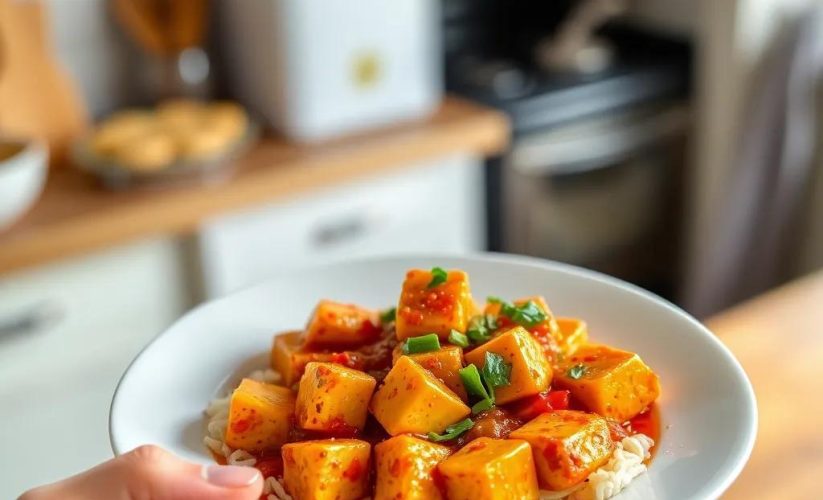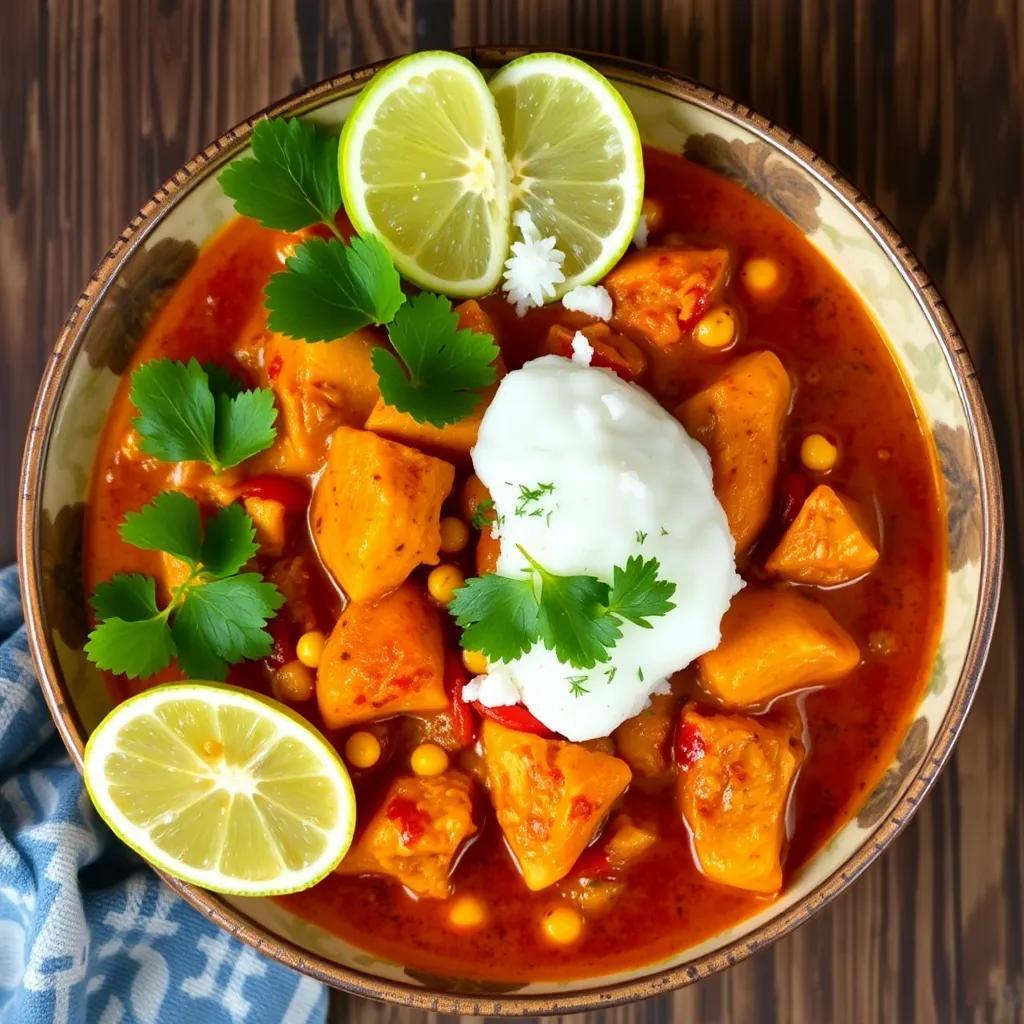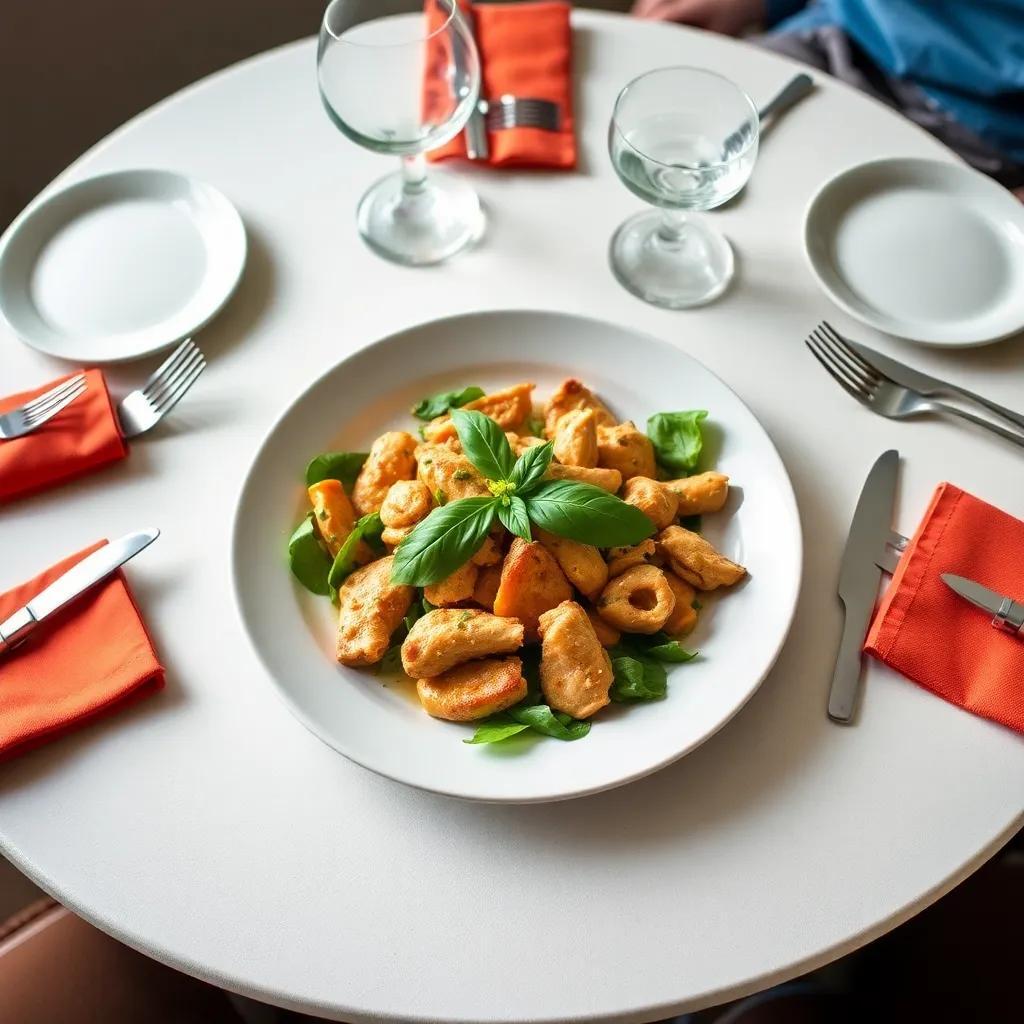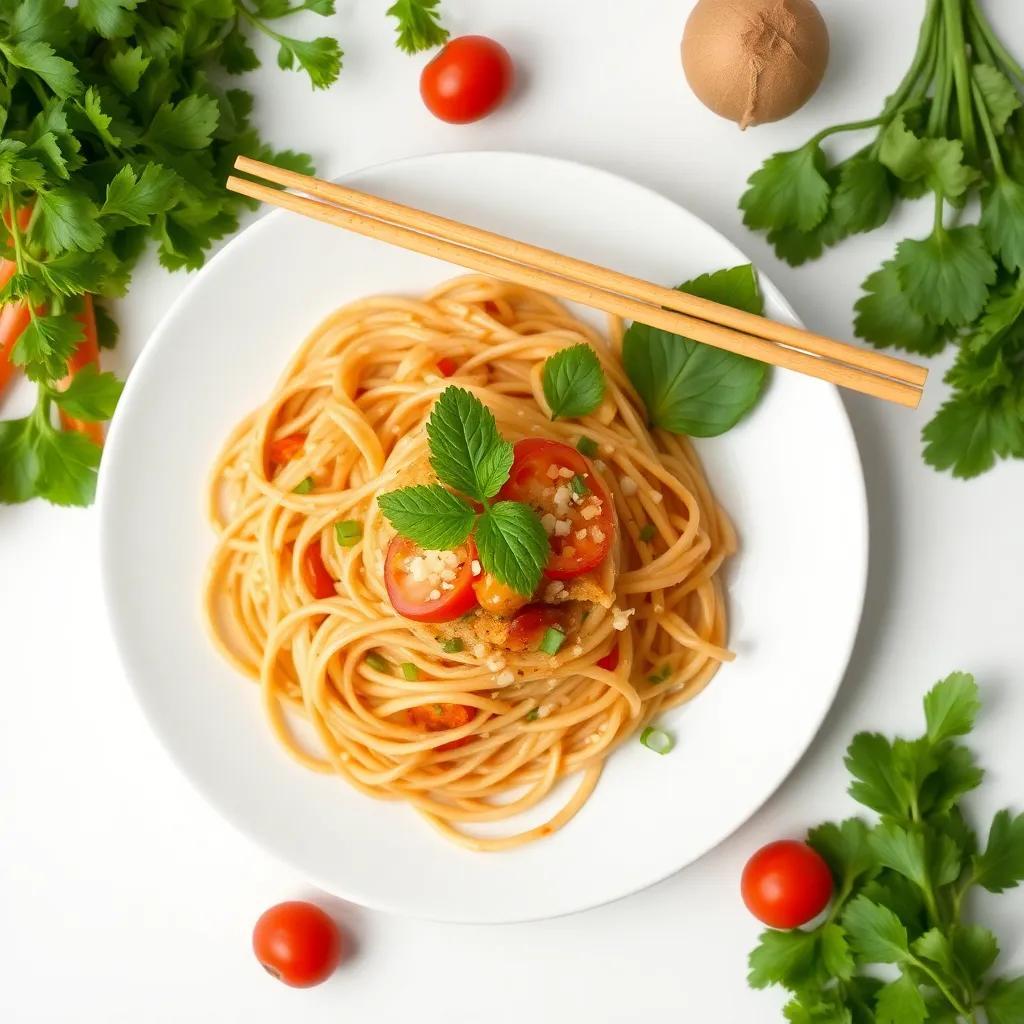Unlock the Rich Flavors of Easy Panang Curry: 30-Minute Recipe
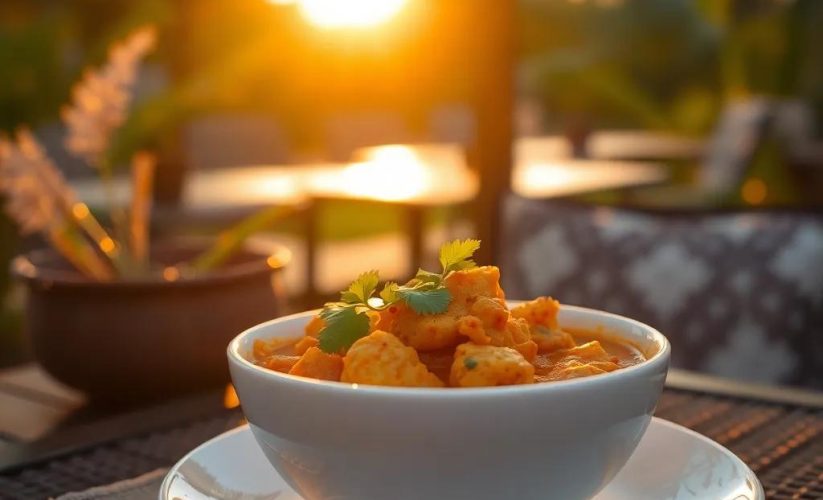
Unlock the Rich Flavors of Easy Panang Curry: 30-Minute Recipe
🌍 Cuisine: Thai
⚙️ Difficulty: Easy
Ingredients
Nutrition Facts
450 kcal
Instructions
- Heat the vegetable oil in a large skillet or wok over medium heat.
- Add the Panang curry paste and sauté for 1-2 minutes until fragrant.
- Pour in half of the coconut milk and stir well to combine with the curry paste.
- Simmer for 3-4 minutes, stirring occasionally, until the coconut milk begins to thicken and oil separates slightly.
- Add the chicken slices into the pan and cook for about 5-7 minutes until the chicken is cooked through.
- Stir in the fish sauce, palm sugar, kaffir lime leaves, and the remaining coconut milk.
- Add red bell pepper slices and simmer for another 3 minutes until the peppers are tender-crisp.
- If the curry is too thick, add 1/4 to 1/2 cup water or chicken broth to adjust the consistency to your liking.
- Taste and adjust seasoning with additional fish sauce or sugar as needed.
- Remove from heat and stir in crushed roasted peanuts if using.
- Garnish with fresh Thai basil leaves before serving.
- Serve hot with steamed jasmine rice.
Serving Suggestions
- Serve with fragrant steamed jasmine rice to soak up the rich curry sauce.
- Accompany with a crisp cucumber salad for a refreshing side.
- Pair with Thai sticky rice for an authentic experience.
- Add a side of lightly steamed or stir-fried greens, such as bok choy or broccoli.
- For extra heat, sprinkle sliced fresh chili or chili flakes on top before serving.
- Top with extra crushed peanuts for added crunch and texture.
- Serve with a wedge of lime on the side to brighten the curry flavors.
Table of Contents
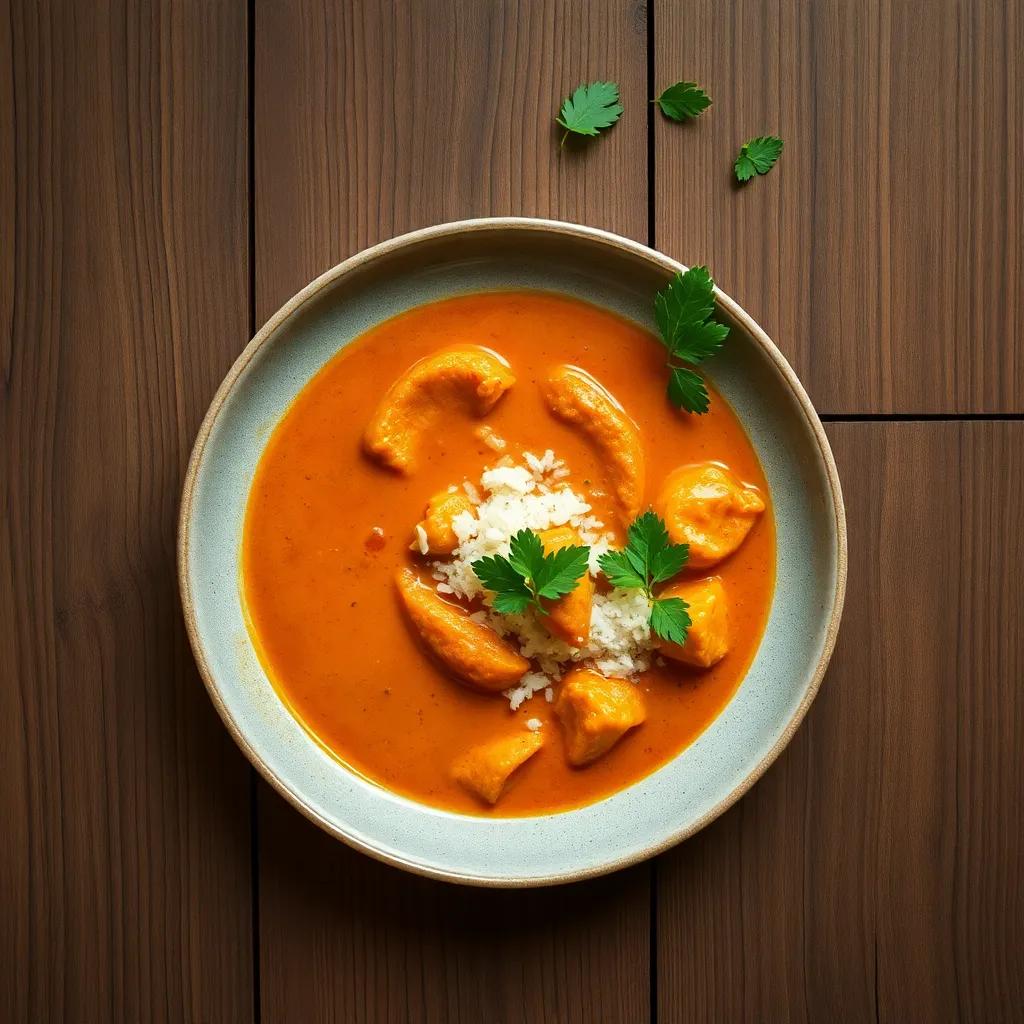
Intro
Panang curry is a vibrant celebration of Thai cuisine—a perfect balance of creamy, spicy, and subtly sweet flavors that awaken the senses without overwhelming the palate. This recipe invites you to create a restaurant-quality dish right in your own kitchen, without the fuss or the hours of preparation typically associated with Thai curries. Whether you’re looking to impress guests with an exotic yet approachable main course or simply craving a comforting meal packed with layers of flavor, this 30-minute Panang curry is a versatile winner.
Ideal for weeknight dinners or casual weekend gatherings, the dish pairs beautifully with jasmine rice, turning each bite into a cozy, satisfying experience. Its quick cooking time makes it especially appealing when you want something wholesome and exciting on the table fast, yet rich enough to feel like a special treat. Plus, the recipe’s straightforward technique means even those new to Thai cooking can confidently achieve authentic taste without getting lost in complexity.
This Panang curry also offers plenty of opportunity to customize—from swapping proteins to adjusting heat levels—making it as adaptable as it is delicious. Whether paired with simple steamed rice or accompanied by crisp greens and fresh herbs, it’s a dish that brings a bit of warmth and comfort to any occasion.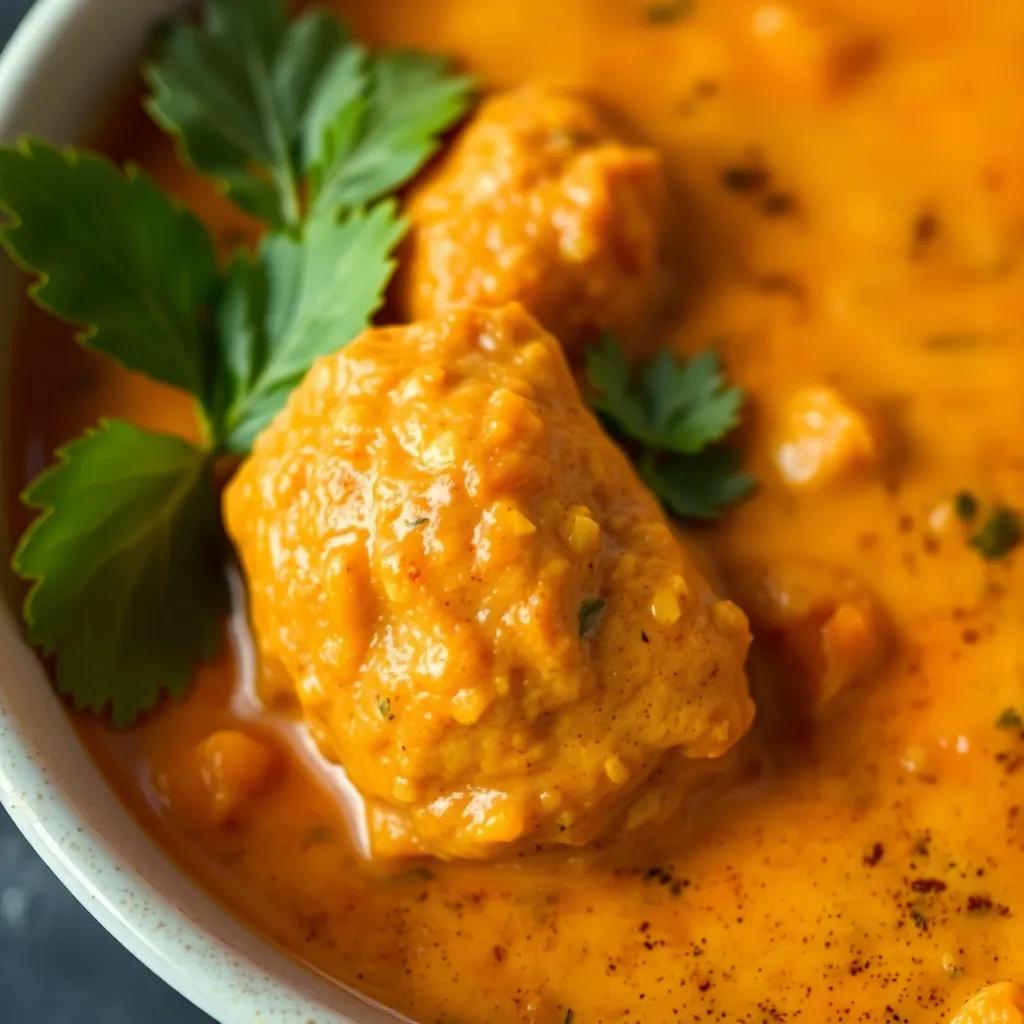
Ingredient Notes
Panang curry’s signature depth and complexity come from a few star ingredients that are key to unlocking its authentic flavor profile. Understanding these helps you make the most of your dish and know how to find suitable alternatives if necessary.
Panang Curry Paste: This bold, aromatic paste is the beating heart of the curry. Unlike other Thai curry pastes, Panang paste is thicker and less watery, with a distinct blend of dried red chilies, galangal, lemongrass, kaffir lime zest, coriander seeds, and peanuts. When shopping, look for a reputable, fresh jar—ideally imported or from Asian markets where quality brands often have a richer, more balanced flavor. If you cannot find Panang paste, red curry paste can substitute in a pinch; however, it might be spicier and less nutty, so consider adding a small handful of crushed peanuts to mimic the characteristic nuttiness.
Coconut Milk (Full Fat): Creamy and luscious, full-fat coconut milk brings the signature silkiness that balances the curry’s spices and heat. It’s crucial to choose a rich, high-quality coconut milk rather than a watered-down or low-fat variety, which can result in a thin or bland sauce. When selecting your can, give it a gentle shake—if you hear liquid sloshing, opt for one with thicker cream at the top. For those who want a lighter option, a blend of half coconut milk and half unsweetened almond milk might work, but expect a milder, less indulgent curry.
Kaffir Lime Leaves: These glossy, fragrant leaves provide a unique citrusy brightness that contrasts delightfully with the creamy coconut base. Fresh kaffir lime leaves are best, delivering the most vibrant aroma and flavor; they are often available at Asian grocers or specialty markets. If you can’t find fresh, dried kaffir lime leaves are an acceptable alternative but use sparingly since drying concentrates their flavor. Another option is a few strips of lime zest plus a splash of lime juice at the end, which can impart some of the needed brightness without overpowering the curry.
Palm Sugar: This subtle sweetener rounds out the curry’s flavor with gentle caramel notes and depth that white or brown sugar simply can’t replicate. If palm sugar is unavailable, light brown sugar or coconut sugar serve as good stand-ins. Avoid refined sugars as they can throw off the delicate balance, making the curry too sweet or one-dimensional.
By sourcing or substituting these ingredients thoughtfully, you preserve the layers of flavor that make Panang curry distinct, ensuring your 30-minute creation sings with authentic Thai character.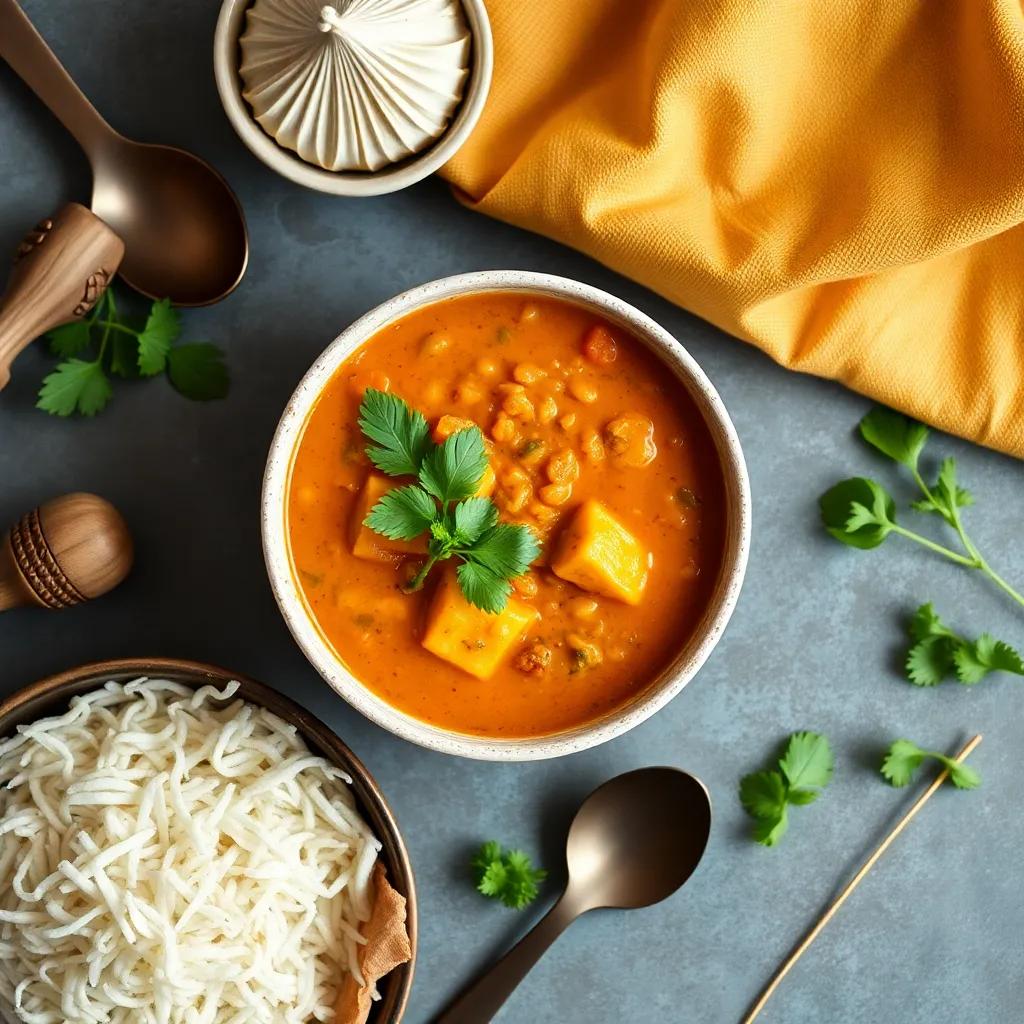
Tips & Variations
To elevate your Panang curry beyond the basics, consider these tips and creative variations that can transform the dish while keeping its authentic spirit intact.
- Master the Curry Paste Sauté: When you first add the Panang curry paste to the oil, give it a good 2 minutes to cook through until it’s fragrant and starts to release its oils. This step intensifies the flavors and prevents the curry from tasting raw or flat. Avoid rushing—this little bit of patience yields a richer, smoother sauce.
- Balance the Sweet, Salty, and Spicy: Panang curry thrives on harmony. After adding fish sauce and palm sugar, taste and adjust carefully. If you prefer a milder curry, reduce the curry paste slightly or omit the optional chili garnish at the end. For those who love heat, a pinch of dried chili flakes or fresh chopped Thai chili stirred in at the last moment will add a welcoming kick without overpowering the dish.
- Protein Swaps & Add-Ins: While chicken is classic, feel free to swap in thin slices of beef, pork, or even firm tofu to customize based on your preference or dietary needs. For a vegetarian or vegan version, replace fish sauce with tamari or soy sauce, and use plant-based protein such as tempeh or seitan. Adding steamed or roasted vegetables like baby corn, snap peas, or eggplant can also bulk up the dish with minimal fuss.
- Curry Consistency Control: If your curry turns too thick or oily, adjust with a splash of water or broth, but keep additions gradual to maintain the luscious texture. Conversely, for a richer curry, stir in a spoonful of coconut cream or an extra drizzle of coconut milk near the end.
- Enhance Aroma and Freshness: Don’t underestimate the finishing touches—garnishing with fresh Thai basil or even cilantro brightens the dish beautifully. A squeeze of lime juice right before serving adds a zesty contrast that lifts the rich coconut flavor.
- Gluten and Allergy-Friendly Adjustments: For gluten-free needs, ensure that your curry paste and fish sauce are certified gluten-free, as some brands use wheat-based fillers. Swap out fish sauce for coconut aminos or mushroom seasoning for vegan and allergy-conscious diners. Roasted peanuts can be omitted or replaced with toasted cashews or pumpkin seeds for a nut-free option.
- Make It Your Own with Regional Twists: Some Panang curry variations include thin slices of kaffir lime zest or even a splash of tamarind paste for extra tang. Experimenting with these can add subtle complexity and intrigue to your home-cooked edition.
By keeping these tips and variations in mind, you’ll confidently unlock new layers of flavor and tailor your Panang curry to suit any occasion, palate, or dietary preference—proving that authentic doesn’t have to mean complicated, and every meal can be your signature creation.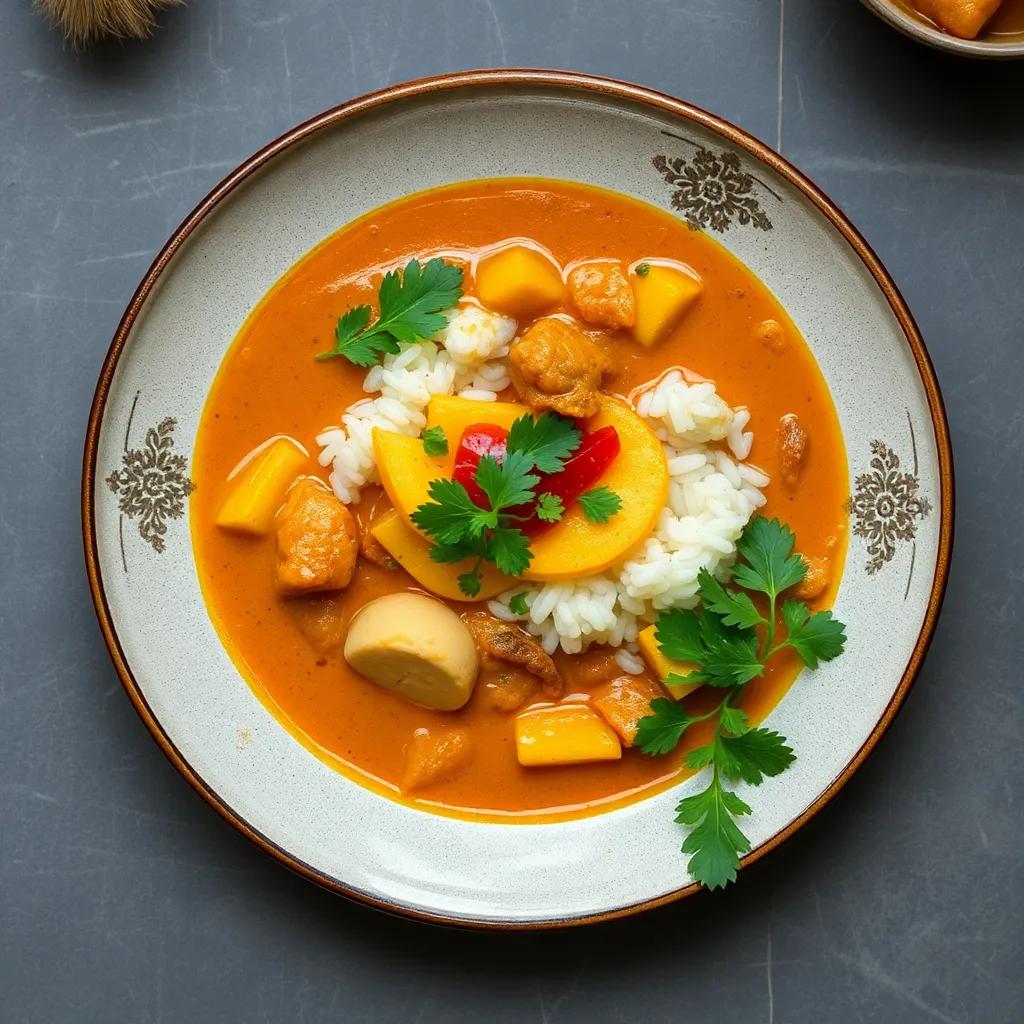
Leftovers & Storage
After enjoying your freshly made Panang curry, storing leftovers properly ensures that you can savor those rich, comforting flavors again without losing quality. Because this curry is cream-based with coconut milk and tender chicken, it’s important to handle leftovers with care to maintain its silky texture and vibrant taste.
To store, let the curry cool to room temperature, but don’t leave it out for more than two hours to avoid bacterial growth. Transfer the curry to an airtight container—glass containers with tight-fitting lids are ideal as they don’t absorb odors and make reheating easy. Avoid storing curry in shallow containers as this may dry out the sauce more quickly.
In the refrigerator, your Panang curry will stay fresh for up to 3 to 4 days. When you’re ready to eat, gently reheat it on the stove over low to medium heat, stirring occasionally to prevent the coconut milk from separating. Adding a splash of water or broth can help bring back a smooth consistency if the sauce has thickened too much. Microwaving is convenient but reheat in short intervals and stir well between to keep the sauce even.
If you want to keep Panang curry longer, it freezes well. Portion it into freezer-safe containers or heavy-duty freezer bags, leaving some headspace for expansion. Label and date your containers to keep track—the curry can be frozen for up to 2 months without significant loss of flavor. Thaw in the refrigerator overnight before reheating gently as described above. Note that while freezing slightly changes the texture of coconut milk, the curry remains deeply satisfying and perfect for quick meals on busy days.
Panang curry also makes a fantastic meal prep option. Prepare a batch at the start of the week and pair it with freshly steamed jasmine rice packed separately to keep rice fluffy. Divide into single-serving containers for effortless lunches or dinners, letting you enjoy a taste of Thailand any day, even on your busiest schedule.
Storing and reheating with these tips will help preserve the curry’s inviting balance of creamy, spicy, and sweet flavors so every leftover bite tastes just as good as when it was first made.
Behind the Recipe
Panang curry holds a special place in Thai culinary tradition as a richer, slightly milder cousin to the more fiery red and green curries. Originating from Central Thailand, it reflects a culinary identity that balances aromatic complexity with comforting creaminess. Unlike other Thai curries that often lean heavily on fresh herbs and blistering heat, Panang is distinctive for its thicker, peanut-infused paste and the subtle citrus notes from kaffir lime leaves. These nuances create a curry that is indulgent without being overwhelming, making it one of the most approachable dishes for those new to Thai flavors.
This particular recipe was inspired by countless meals shared around a bustling Bangkok kitchen table, where Panang curry is more than just food—it’s a communal experience. Families and friends gather to savor the harmony of flavors that the curry offers, often paired simply with jasmine rice to soak up every last drop. The ease and speed of this 30-minute version mirror the everyday rhythm of Thai home cooks who balance fresh ingredients, intense flavors, and time-saving techniques without sacrificing authenticity.
Beyond the kitchen, the recipe’s approachable nature embodies Thai culture’s hallmark of balancing complexity with simplicity—highlighting bold flavors that feel familiar and comforting. It’s a dish that welcomes experimentation, whether adding a personal heat preference or incorporating local pantry staples, yet always paying homage to its roots. Making Panang curry at home, especially with this streamlined approach, is an invitation to connect with a rich tradition and bring a little Bangkok warmth into your own dining room.
FAQ
Can I use tofu instead of chicken in this Panang Curry?
What’s the best way to store leftovers, and how long do they keep?
Is there a substitute if I can’t find Panang curry paste?
How can I make this dish spicier or milder to suit my taste?
Can I prepare parts of this curry ahead of time?
What are some good sides to serve with Panang Curry?
Is this Panang Curry recipe gluten-free and allergy-friendly?
Enjoy Your Meal!
With its perfect balance of creamy coconut, fragrant spices, and a touch of sweetness, this Easy Panang Curry is a delightful way to bring rich Thai flavors to your dinner table in just 30 minutes. Whether you’re a seasoned home cook or just starting out, this recipe offers a tasty, approachable adventure that’s sure to satisfy your cravings and impress anyone lucky enough to share your meal.
Give it a try and let us know how it turns out! We’d love to hear your thoughts, see your ratings, or discover any personal twists you add to make this dish truly your own. Happy cooking and bon appétit!

